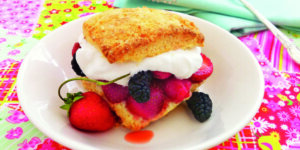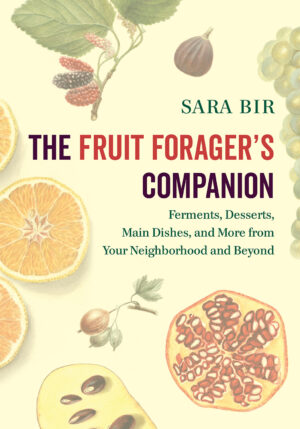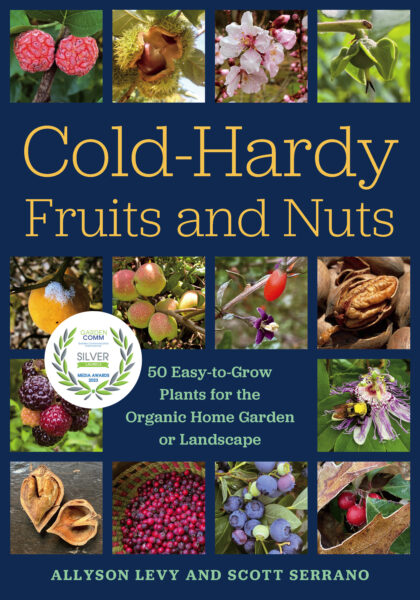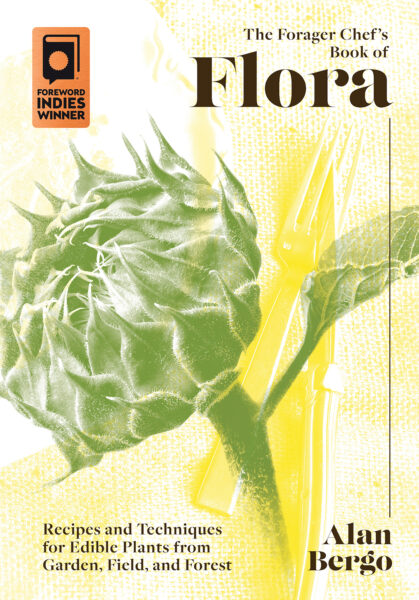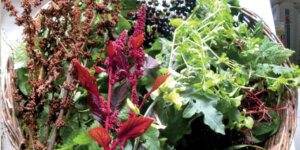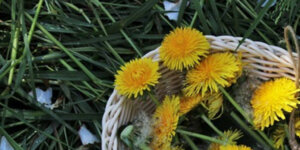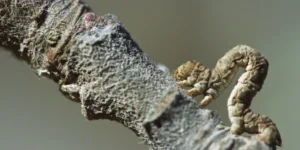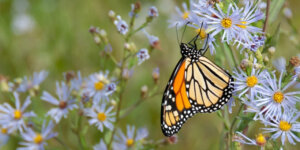Foraging For Wild Strawberries
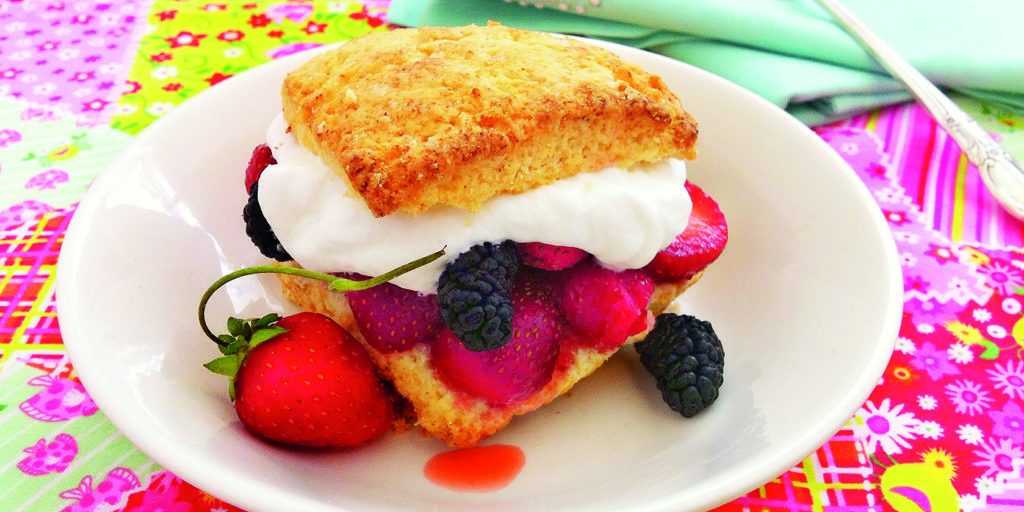
Have you ever stumbled across wild strawberries? Growing along the sunny banks and around a forest edge, along roadsides, hillsides or even in your own back yard, wild strawberries are delicious.
Wild strawberries are much smaller than those hollow, crunchy, off-season truck farm monstrosities most of us allow to pass for strawberries. Cultivated in-season berries, the kind you pick at local farms, may still dwarf their wild cousins. They will also be much easier to gather a significant amount of, since wild strawberries grow in clusters, but not giant swaths.
Look for them from May to October, depending on the climate, in well-drained areas with some sun exposure: hillsides, slopes, patchy forests.
The following excerpt is from The Fruit Forager’s Companion by Sara Bir and has been adapted for the web.
Searching for Wild Strawberries
Among fruits, strawberries are perhaps the most sexualized. They also convey the most innocence. Why the dichotomy? There’s a reason Strawberry Shortcake heads up that franchise of spunky rainbow-haired dolls. But there’s also a reason painter Hieronymus Bosch used strawberries as a recurring symbol for the sin of fornication. See the pale, emaciated naked Flemings grappling miserably over boulder-sized strawberries in The Garden of Earthly Delights and you get the sense that eating giant fruit is not only unfulfilling, but something your eternal soul will pay dearly for. (What a drag life must have been in churchy fifteenth-century Dutch circles!)
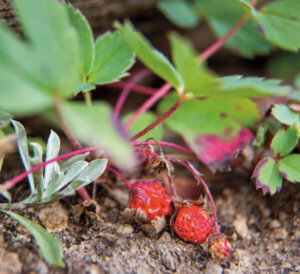 Wild strawberries are as fleeting as sexual innocence in the face of opportunity. In Roman Polanski’s 1979 film adaptation of Thomas Hardy’s Tess of the D’Urbervilles, the cad Alec D’Urberville dangles a perfect, ripe strawberry before the nubile country maiden Tess. “I would rather take it from my own hand,” she says. But Alec accuses her of being coy and she relents, easing her ruby lips over the fruit and accepting it. After failing to seduce Tess, Alec rapes her, and eventually (spoiler alert) Tess will be hanged for murdering him.
Wild strawberries are as fleeting as sexual innocence in the face of opportunity. In Roman Polanski’s 1979 film adaptation of Thomas Hardy’s Tess of the D’Urbervilles, the cad Alec D’Urberville dangles a perfect, ripe strawberry before the nubile country maiden Tess. “I would rather take it from my own hand,” she says. But Alec accuses her of being coy and she relents, easing her ruby lips over the fruit and accepting it. After failing to seduce Tess, Alec rapes her, and eventually (spoiler alert) Tess will be hanged for murdering him.
Symbolically, the strawberry straddles the before and after, but in our actual lives there’s no tension in the moment itself: Anyone who has come across wild strawberries instantly falls into a carefree reverie, very much as a teenager making out in a car. Boundaries peel away, though overindulgence in wild strawberries results in a stomachache, at worst. Poor Tess—Maiden No More—eats that single fateful strawberry and emerges from the figurative backseat in the family way.
Humans have eaten strawberries without ruining their reputations probably since they first spotted them, though the earliest records of wild strawberries in human feces date from the Mesolithic era (10,000 to 5,000 BCE). Bosch be damned—fornication is fun, and ideally free of scarring, spiritually or physically. The times we live in are in many ways dark, but our comparative enlightenment about sexual matters should translate without effort to the shameless seeking and consumption of wild strawberries, perhaps as our hunter-gatherer ancestors did.
There are numerous varieties of wild strawberries growing in North America: alpine strawberries or wood strawberries (F. vesca, also called fraises de bois in Europe and on the pages of Martha Stewart Living), though the Virginia strawberry (F. virginiana) is more prevalent. The beach strawberry (F. chiloensis) grows in dunes and grasslands along the West Coast.
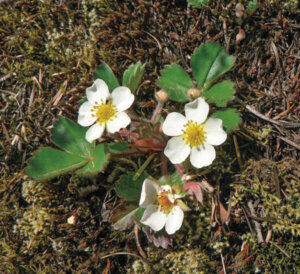 Strawberries are perennial, and they send out runners (stolons in botany-speak) just like their cultivated relatives. We’re so used to the sight of strawberries that the seeds on their exteriors don’t jar us, but it is unique among fruits. Botanists don’t consider strawberries to be true berries, but “aggregate accessory fruits”: Each individual strawberry seed is an ovary, and is technically a separate fruit.
Strawberries are perennial, and they send out runners (stolons in botany-speak) just like their cultivated relatives. We’re so used to the sight of strawberries that the seeds on their exteriors don’t jar us, but it is unique among fruits. Botanists don’t consider strawberries to be true berries, but “aggregate accessory fruits”: Each individual strawberry seed is an ovary, and is technically a separate fruit.
Wild strawberries are much smaller than those hollow, crunchy, off-season truck farm monstrosities most of us allow to pass for strawberries. Cultivated in-season berries, the kind you pick at local farms, may still dwarf their wild cousins. They will also be much easier to gather a significant amount of, since wild strawberries grow in clusters, but not giant swaths. Look for them from May to October, depending on the climate, in well-drained areas with some sun exposure: hillsides, slopes, patchy forests.
Strawberries are fairly easy to cultivate, and are a great deal of pleasure to eat straight from the vine. A gardening friend of mine consumed them that way exclusively, spitting out any specimens she felt had subpar flavor and moving on to the promise of the next berry. This technique can also be employed with wild strawberries, exalting in the moment. Perhaps this basal sort of behavior is the root of the strawberry’s role in art, stories, and song as a portal to sensual bliss— indicative of either naïveté or worldliness, depending on how uptight you are. Control of one’s manners and bearing are lost upon biting into the delight of a ripe wild strawberry, and I encourage you to pursue this state of being, fleeting as it is.
Harvesting and Storage
Eat these on the spot, as many as possible. If you are fortunate enough to come across a cache of wild strawberries, take some home for people you really love, even if you have to do it using an inverted baseball cap to hold the berries. And for God’s sake refrigerate them as soon as possible—wild strawberries have the shelf life of a mayfly.
Culinary Possibilities
As far as dressing them up, little should be required. Some lightly sweetened whipped cream à la Wimbledon would be tasty, as well as an amusing juxtaposition of the highly refined with the savage.
I think cooking wild strawberries is a waste; save that for the flats from the U-pick farm. But if you bring wild strawberries home and their flavor in the shade of your abode underwhelms you because the intoxication of strawberry Kismet has passed, macerate them in a little sugar, or throw them in a shrub or kompot.
To really concentrate the flavor of strawberries, toss them with some sugar, scatter them on a sheet pan, and roast them in a 400°F (200°C) oven until they shrink down and give up some juice. These are really great with yogurt or panna cotta. Instead of a sheet pan, put the strawberries in a baking dish so less liquid evaporates, and this will yield a jammy compote.
RECIPE: Light and Fluffy Old-Fashioned Berry Shortcakes
Biscuit-style shortcakes have a homespun charm, and their relatively low amount of sugar really lets the sweetness of the berries shine. The mixing technique is similar to that for scones, but there’s a beaten egg added here for a cakier crumb. Cake flour also helps make these light and fluffy, but regular all-purpose flour works fine if that’s all you have.
For the shortcakes
- 2 cups (240 g) cake flour
- 1⁄2 teaspoon table salt
- 4 teaspoons baking powder
- 1⁄2 teaspoon cream of tartar
- 3 tablespoons granulated sugar
- 1⁄2 cup (1 stick) cold unsalted butter
- 1⁄3 cup (80 ml) heavy cream or whole milk
- 1 egg
For the berries
- 4 cups (580 g) fresh mixed berries, such as strawberries, raspberries, and blackberries
- 1⁄4 cup (50 g) granulated sugar, or to taste (some berries are sweeter than others)
- 1⁄2 teaspoon finely grated lemon or lime zest, optional
For the whipped cream
- 1 cup (240 ml) heavy cream, chilled
- 2 teaspoons granulated sugar
To make the shortcakes, preheat the oven to 425°F (220°C). Line two baking sheets with parchment paper or silicone baking mats.
In a large mixing bowl, whisk together the flour, salt, baking powder, cream of tartar, and sugar. Grate the butter on the large holes of a box grater and toss it with the flour mixture. Using your fingertips or a pastry cutter, work the butter into the flour until it looks like fine crumbs. Measure the cream in a glass measuring cup, crack the egg into it, and beat with a fork until well combined.
Pour the cream mixture over the flour-butter mixture and, with your hands, gently work until it comes together to form a rough, shaggy dough that’s slightly sticky. (Add a sprinkle of flour if the dough is too loose; add a drizzle of cream if it feels too dry or crumbly.) Knead for four or five turns on a lightly floured surface and pat into a 7 × 7-inch (18 cm) square. Cut into nine squares and transfer to the baking sheets (giving the shortcakes plenty of room allows them to brown more evenly).
Bake until golden in spots, 15 to 20 minutes, rotating the baking sheets front to back and top to bottom halfway through. Cool on a rack before serving. The shortcakes may be made a day in advance.
To make the berries, rinse and drain the berries. If you’re using strawberries, stem them and halve or slice them. Toss together with the sugar and (if using) lemon or lime zest. Let stand at room temperature for 30 minutes.
Shortly before serving, make the whipped cream. Combine the heavy cream and sugar in a large bowl and beat by hand or with an electric mixer until it makes soft, rounded peaks.
Gently split the shortcakes with a serrated knife or fork. Spoon the berries and their accumulated juice over the bottom halves of the shortcakes, then top with a generous dollop of whipped cream and, finally, with the top half of the shortcake. Serve immediately, with any remaining berries or whipped cream on the side.
Recommended Reads
Recent Articles
Foraging wild plants in your area is a great way to shake up your culinary delights. Don’t know where to start? Below are our best foraging posts to get you started on your hunt for wild edibles. Foraging 101: Where to find your bounty We’ve given you descriptions. We’ve given you recipes. We’ve given you…
Read MoreYou can forget about waiting for your wine to ferment, because we have a recipe for dandelion beer that will be ready in just a week! Who knew those weeds in your backyard could make such a fun beverage? The following excerpt is from Pascal Baudar’s Wildcrafting Brewer. It has been adapted for the web.…
Read MoreHow do you control bugs & pests on your fruit trees without using harmful sprays and treatments? Here are some tips for identifying insects on fruit trees and controlling them organically. The following is an excerpt from The Holistic Orchard by Michael Phillips. It has been adapted for the web. Finding Insects On Fruit Trees…
Read MoreNothing can be compared to the taste of a fresh, hot slice of pizza that came straight out of a wood-fired oven. By building your own clay wood-fired pizza oven, you’ll have this cheesy delicacy at your fingertips whenever you’re craving it! VIDEO: Building An Outdoor Clay Wood-Fired Pizza Oven Take it from Richard Miscovich,…
Read MoreFor too long, bugs have had a negative connotation associated with them. But what if we took the time to observe the benefits of insects? It’s time to rebug our gardens, lawns, and parks! The following is an excerpt from Rebugging the Planet by Vicki Hird. It has been adapted for the web. Adding Bugs:…
Read More

